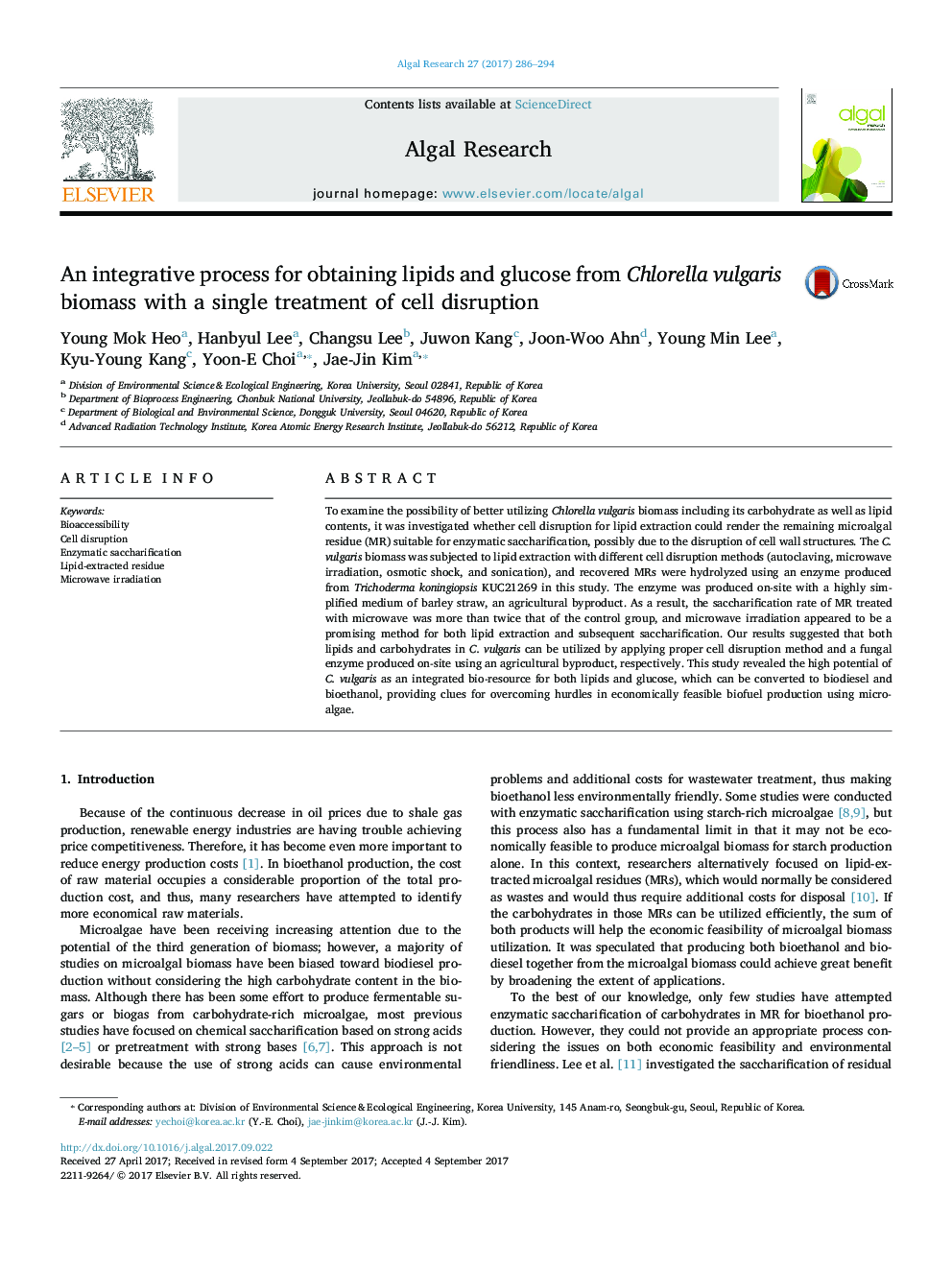| Article ID | Journal | Published Year | Pages | File Type |
|---|---|---|---|---|
| 5478548 | Algal Research | 2017 | 9 Pages |
Abstract
To examine the possibility of better utilizing Chlorella vulgaris biomass including its carbohydrate as well as lipid contents, it was investigated whether cell disruption for lipid extraction could render the remaining microalgal residue (MR) suitable for enzymatic saccharification, possibly due to the disruption of cell wall structures. The C. vulgaris biomass was subjected to lipid extraction with different cell disruption methods (autoclaving, microwave irradiation, osmotic shock, and sonication), and recovered MRs were hydrolyzed using an enzyme produced from Trichoderma koningiopsis KUC21269 in this study. The enzyme was produced on-site with a highly simplified medium of barley straw, an agricultural byproduct. As a result, the saccharification rate of MR treated with microwave was more than twice that of the control group, and microwave irradiation appeared to be a promising method for both lipid extraction and subsequent saccharification. Our results suggested that both lipids and carbohydrates in C. vulgaris can be utilized by applying proper cell disruption method and a fungal enzyme produced on-site using an agricultural byproduct, respectively. This study revealed the high potential of C. vulgaris as an integrated bio-resource for both lipids and glucose, which can be converted to biodiesel and bioethanol, providing clues for overcoming hurdles in economically feasible biofuel production using microalgae.
Related Topics
Physical Sciences and Engineering
Energy
Renewable Energy, Sustainability and the Environment
Authors
Young Mok Heo, Hanbyul Lee, Changsu Lee, Juwon Kang, Joon-Woo Ahn, Young Min Lee, Kyu-Young Kang, Yoon-E Choi, Jae-Jin Kim,
